Aspirin (single dose) for perineal pain in the early postpartum period
- PMID: 32702783
- PMCID: PMC7388929
- DOI: 10.1002/14651858.CD012129.pub3
Aspirin (single dose) for perineal pain in the early postpartum period
Abstract
Background: Perineal trauma, due to spontaneous tears, surgical incision (episiotomy), or in association with operative vaginal birth, is common after vaginal birth, and is often associated with postpartum perineal pain. Birth over an intact perineum may also lead to perineal pain. There are adverse health consequences associated with perineal pain for the women and their babies in the short- and long-term, and the pain may interfere with newborn care and the establishment of breastfeeding. Aspirin has been used in the management of postpartum perineal pain, and its effectiveness and safety should be assessed. This is an update of the review, last published in 2017.
Objectives: To determine the effects of a single dose of aspirin (acetylsalicylic acid), including at different doses, in the relief of acute postpartum perineal pain.
Search methods: For this update, we searched the Cochrane Pregnancy and Childbirth's Trials Register (4 October 2019), ClinicalTrials.gov, the WHO International Clinical Trials Registry Platform (ICTRP) (4 October 2019) and screened reference lists of retrieved studies.
Selection criteria: Randomised controlled trials (RCTs), assessing single dose aspirin compared with placebo, no treatment, a different dose of aspirin, or single dose paracetamol or acetaminophen, for women with perineal pain in the early postpartum period. We planned to include cluster-RCTs, but none were identified. We excluded quasi-RCTs and cross-over studies.
Data collection and analysis: Two review authors independently assessed study eligibility, extracted data and assessed the risk of bias of the included RCTs. Data were checked for accuracy. The certainty of the evidence for the main comparison (aspirin versus placebo) was assessed using the GRADE approach.
Main results: We included 17 RCTs, 16 of which randomised 1132 women to aspirin or placebo; one RCT did not report numbers of women. Two RCTs (of 16) did not contribute data to meta-analyses. All women had perineal pain post-episiotomy, and were not breastfeeding. Studies were published between 1967 and 1997, and the risk of bias was often unclear, due to poor reporting. We included four comparisons: aspirin versus placebo (15 RCTs); 300 mg versus 600 mg aspirin (1 RCT); 600 mg versus 1200 mg aspirin (2 RCTs); and 300 mg versus 1200 mg aspirin (1 RCT). Aspirin versus placebo Aspirin may result in more women reporting adequate pain relief four to eight hours after administration compared with placebo (risk ratio (RR) 2.03, 95% confidence interval (CI) 1.69 to 2.42; 13 RCTs, 1001 women; low-certainty evidence). It is uncertain whether aspirin compared with placebo has an effect on the need for additional pain relief (RR 0.25, 95% CI 0.17 to 0.37; 10 RCTs, 744 women; very low-certainty evidence), or maternal adverse effects (RR 1.08, 95% CI 0.57 to 2.06; 14 RCTs, 1067 women; very low-certainty evidence), four to eight hours after administration. Analyses based on dose did not reveal any clear subgroup differences. 300 mg versus 600 mg aspirin It is uncertain whether over four hours after administration, 300 mg compared with 600 mg aspirin has an effect on adequate pain relief (RR 0.82, 95% CI 0.36 to 1.86; 1 RCT, 81 women) or the need for additional pain relief (RR 0.68, 95% CI 0.12 to 3.88; 1 RCT, 81 women). There were no maternal adverse effects in either aspirin group. 600 mg versus 1200 mg aspirin It is uncertain whether over four to eight hours after administration, 600 mg compared with 1200 mg aspirin has an effect on adequate pain relief (RR 0.85, 95% CI 0.52 to 1.39; 2 RCTs, 121 women), the need for additional pain relief (RR 1.32, 95% CI 0.30 to 5.68; 2 RCTs, 121 women), or maternal adverse effects (RR 3.00, 95% CI 0.13 to 69.52; 2 RCTs, 121 women). 300 mg versus 1200 mg aspirin It is uncertain whether over four hours after administration, 300 mg compared with 1200 mg aspirin has an effect on adequate pain relief (RR 0.62, 95% CI 0.29 to 1.32; 1 RCT, 80 women) or need for additional pain relief (RR 2.00, 95% CI 0.19 to 21.18; 1 RCT, 80 women). There were no maternal adverse effects in either aspirin group. None of the included RCTs reported on neonatal adverse effects. No RCTs reported on secondary review outcomes of: prolonged hospitalisation due to perineal pain; re-hospitalisation due to perineal pain; fully breastfeeding at discharge; mixed feeding at discharge; fully breastfeeding at six weeks; mixed feeding at six weeks; perineal pain at six weeks; maternal views; or maternal postpartum depression.
Authors' conclusions: Single dose aspirin may increase adequate pain relief in women with perineal pain post-episiotomy compared with placebo. It is uncertain whether aspirin has an effect on the need for additional analgesia, or on maternal adverse effects, compared with placebo. We downgraded the certainty of the evidence because of study limitations (risk of bias), imprecision, and publication bias. Aspirin may be considered for use in non-breastfeeding women with post-episiotomy perineal pain. Included RCTs excluded breastfeeding women, so there was no evidence to assess the effects of aspirin on neonatal adverse effects or breastfeeding. Future RCTs should be designed to ensure low risk of bias, and address gaps in the evidence, such as the secondary outcomes established for this review. Current research has focused on women with post-episiotomy pain; future RCTs could be extended to include women with perineal pain associated with spontaneous tears or operative birth.
Copyright © 2020 The Cochrane Collaboration. Published by John Wiley & Sons, Ltd.
Conflict of interest statement
Emily Shepherd: none known
Rosalie M Grivell: none known
Figures
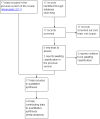

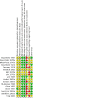



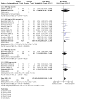

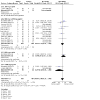
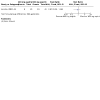
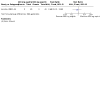
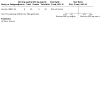



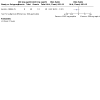


Update of
-
Aspirin (single dose) for perineal pain in the early postpartum period.Cochrane Database Syst Rev. 2017 Feb 9;2(2):CD012129. doi: 10.1002/14651858.CD012129.pub2. Cochrane Database Syst Rev. 2017. Update in: Cochrane Database Syst Rev. 2020 Jul 24;7:CD012129. doi: 10.1002/14651858.CD012129.pub3. PMID: 28181214 Free PMC article. Updated.
Similar articles
-
Aspirin (single dose) for perineal pain in the early postpartum period.Cochrane Database Syst Rev. 2017 Feb 9;2(2):CD012129. doi: 10.1002/14651858.CD012129.pub2. Cochrane Database Syst Rev. 2017. Update in: Cochrane Database Syst Rev. 2020 Jul 24;7:CD012129. doi: 10.1002/14651858.CD012129.pub3. PMID: 28181214 Free PMC article. Updated.
-
Oral non-steroidal anti-inflammatory drugs (single dose) for perineal pain in the early postpartum period.Cochrane Database Syst Rev. 2021 Jan 11;1(1):CD011352. doi: 10.1002/14651858.CD011352.pub3. Cochrane Database Syst Rev. 2021. PMID: 33427305 Free PMC article.
-
Relief of pain due to uterine cramping/involution after birth.Cochrane Database Syst Rev. 2020 Oct 20;10(10):CD004908. doi: 10.1002/14651858.CD004908.pub3. Cochrane Database Syst Rev. 2020. PMID: 33078388 Free PMC article.
-
Local cooling for relieving pain from perineal trauma sustained during childbirth.Cochrane Database Syst Rev. 2020 Oct 9;10(10):CD006304. doi: 10.1002/14651858.CD006304.pub4. Cochrane Database Syst Rev. 2020. PMID: 33034900 Free PMC article.
-
Perineal techniques during the second stage of labour for reducing perineal trauma and postpartum complications.Cochrane Database Syst Rev. 2024 Oct 28;10(10):CD016148. doi: 10.1002/14651858.CD016148. Cochrane Database Syst Rev. 2024. PMID: 39465967 Free PMC article.
Cited by
-
Factors associated with perineal pain on the first postnatal day after vaginal delivery: a cross-sectional study of primiparous women.Nagoya J Med Sci. 2024 Feb;86(1):52-63. doi: 10.18999/nagjms.86.1.52. Nagoya J Med Sci. 2024. PMID: 38505721 Free PMC article.
-
Improving NKCC1 Function Increases the Excitability of DRG Neurons Exacerbating Pain Induced After TRPV1 Activation of Primary Sensory Neurons.Front Cell Neurosci. 2021 May 25;15:665596. doi: 10.3389/fncel.2021.665596. eCollection 2021. Front Cell Neurosci. 2021. PMID: 34113239 Free PMC article.
-
The clinical characteristics of perineal tears: A study carried out on 14 pregnant women in a tertiary center: Case series.Ann Med Surg (Lond). 2022 Aug 18;82:104432. doi: 10.1016/j.amsu.2022.104432. eCollection 2022 Oct. Ann Med Surg (Lond). 2022. PMID: 36268344 Free PMC article.
-
The Use of Capacitive and Resistive Energy Transfer in Postpartum Pain Management in Women after Perineal Trauma.J Clin Med. 2023 Sep 20;12(18):6077. doi: 10.3390/jcm12186077. J Clin Med. 2023. PMID: 37763017 Free PMC article.
References
References to studies included in this review
Bloomfield 1967 {published data only}
-
- Bloomfield SS, Gaffney TE, Howett M. Comparative analgesic efficacy of chlorphenesin carbamate and acetylsalicylic acid after episiotomy. Anesthesia and Analgesia 1967;46(5):515-20. - PubMed
Bloomfield 1970a {published data only}
-
- Bloomfield SS, Barden TP, Hille R. Clinical evaluation of flufenisal, a long-acting analgesic. Clinical Pharmacology and Therapeutics 1970;11(5):747-54. - PubMed
-
- Bloomfield SS, Barden TP, Mitchell J. Aspirin and codeine in two postpartum pain models. Clinical Pharmacology and Therapeutics 1976;20(4):499-503. - PubMed
Bloomfield 1970b {published data only}
-
- Bloomfield SS, Hurwitz HN. Tourniquet and episiotomy pain as test models for aspirin-like analgesics. Journal of Clinical Pharmacology 1970;10(6):361-9. - PubMed
Bloomfield 1974 {published data only}
-
- Bloomfield SS, Barden TP, Mitchell J. Comparative efficacy of ibuprofen and aspirin in episiotomy pain. Clinical Pharmacology and Therapeutics 1974;15(6):565-70. - PubMed
Devroey 1978 {published data only}
-
- Devroey P, Steelman SL, Caudron J. A double blind, placebo controlled, single dose study comparing three dose levels of diflunisal with aspirin and placebo in patients with pain due to episiotomy. Acta Therapeutica 1977;3(3):205-16.
-
- Devroey P. A double-blind comparison of diflunisal and aspirin in the treatment of post-operative pain after episiotomy. Current Medical Research and Opinion 1978;5(7):544-7. - PubMed
-
- Devroey P. The treatment of postoperative pain with a single dose of diflunisal. Clinical Therapeutics 1977;1(Suppl A):30-3.
Friedrich 1983 {published data only}
-
- Friedrich E. A comparison of etodolac (Ultradol) with aspirin and placebo in patients with episiotomy pain. Current Therapeutic Research, Clinical and Experimental 1983;33(1):100-7.
Jain 1978a {published data only}
-
- Jain AK, McMahon FG, Ryan JR, Raphan H, Richard W. Piroxicam, a novel analgesic in postpartum pain. European Journal of Rheumatology and Inflammation 1978;1(3):356-9.
Jain 1978b {published data only}
-
- Jain AK, McMahon FG, Ryan JR, Unger D, Richard W. A comparison of aspirin-caffeine versus aspirin: results of two double-blind placebo controlled studies in postpartum pain. Clinical Pharmacology and Therapeutics 1978;23(1):116. - PubMed
-
- Jain AK, McMahon FG, Ryan JR, Unger D, Richard W. Aspirin and aspirin-caffeine in postpartum pain relief. Clinical Pharmacology and Therapeutics 1978;24(1):69-75. - PubMed
Jain 1985 {published data only}
-
- Jain AK, McMahon FG, Ryan JR, Smith GB. Analgesic efficacy of indoprofen in postpartum episiotomy pain. Current Therapeutic Research, Clinical and Experimental 1985;38(5):677-81.
London 1983a {published data only}
-
- London R, Sundaram GS, Feldman S, Goldstein P. Evaluation of analgesic efficacy and safety of fluproquazone compared to aspirin in the treatment of episiotomy pain. Federation Proceedings 1982;41(4):No. 5573.
-
- London R, Sundaram GS, Feldman S, Goldstein PJ. Episiotomy pain: efficacy and safety of fluproquazone compared to aspirin and placebo. International Journal of Gynaecology and Obstetrics 1983;21(3):251-5. - PubMed
London 1983b {published data only}
-
- London RS, Sundaram GS, Feldman S, Goldstein PJ. Aspirin in the treatment of episiotomy pain. Southern Medical Journal 1983;76(7):844-5. - PubMed
Mukherjee 1980 {published data only}
-
- Mukherjee S, Sood S. A controlled evaluation of orally administered aspirin dipyrone and placebo in patients with post-operative pain. Current Medical Research and Opinion 1980;6(9):619-23. - PubMed
Okun 1982 {published data only}
-
- Okun R. Evaluation of the analgesic effect of fendosal in patients with postpartum uterine cramp or episiotomy pain. Current Therapeutic Research, Clinical and Experimental 1982;32(1):65-73.
Olson 1997 {published data only}
-
- Olson NZ, Sunshine A, Zighelboim I, DeCastro A. Onset and duration of analgesia of diclofenac potassium in the treatment of postepisiotomy pain. American Journal of Therapeutics 1997;4(7-8):239-46. - PubMed
Sunshine 1983a {published data only}
-
- Sunshine A, Olson NZ, Laska EM, Zighelboim I, De Castro A, De Sarrazin C. Analgesic effect of graded doses of flurbiprofen in post-episiotomy pain. Pharmacotherapy 1983;3(3):177-81. - PubMed
Sunshine 1983b {published data only}
-
- Sunshine A, Olson NZ, Laska EM, Zighelboim I, De Castro A, De Sarrazin C. Ibuprofen, zomepirac, aspirin, and placebo in the relief of postepisiotomy pain. Clinical Pharmacology and Therapeutics 1983;34(2):254-8. - PubMed
Trop 1983 {published data only}
-
- Trop D, Nucci C, Elie R, Gareau J. Double-blind comparative evaluation of tiaprofenic acid (Surgam) versus acetylsalicylic acid (ASA) in relieving pain following episiotomy. Current Therapeutic Research, Clinical and Experimental 1983;34(2I):274-9.
References to studies excluded from this review
Bruni 1965 {published data only}
-
- Bruni JR, Holt RE. Controlled double-blind evaluation of three analgesic medications for postpartum discomfort. Obstetrics and Gynecology 1965;25:76-81. - PubMed
Gindhart 1971 {published data only}
-
- Gindhart JD. A rationale for studying analgesia. A double blind study in postpartum patients. Current Therapeutic Research, Clinical and Experimental 1971;13(4):240-50. - PubMed
Gruber 1979 {published data only}
-
- Gruber CM, Bauer RO, Bettigole JB, Lash AF, McDonald JS. A multicenter study for analgesia involving fenoprofen, propoxyphene (alone or in combination) with placebo and aspirin controls in postpartum pain. Journal of Medicine 1979;10(1-2):65-98. - PubMed
Moggian 1972 {published data only}
-
- Moggian G, Cervellati I, Tamburini E. Critical study of the post-partum pain by means of a clinical pharmacology experiment. Bollettino Chimico Farmaceutico 1972;111(8):497-9. - PubMed
Prockop 1960 {published data only}
-
- Prockop LD, Eckenhoff JE, McElroy RC. Evaluation of dextropropoxyphene, codeine and acetylsalicylic compound. Obstetrics and Gynecology 1960;16:113-8. - PubMed
Rubin 1984 {published data only}
-
- Rubin A, Winter LJ. A double-blind randomized study of an aspirin/caffeine combination versus acetaminophen/aspirin combination versus acetaminophen versus placebo in patients with moderate to severe post-partum pain. Journal of International Medical Research 1984;12(6):338-45. - PubMed
Santiago 1959 {published data only}
-
- Santiago FS, Danforth DN. Non-narcotic analgesia to simplify postpartum care. Obstetrics and Gynecology 1959;14(1):22-3. - PubMed
Sunshine 1983c {published data only}
-
- Sunshine A, Olson JZ, Siegel C, Laska EM. Oral analgesic study of ketoprofen, aspirin and placebo in post-partum pain. Clinical Pharmacology and Therapeutics 1983;33:154.
-
- Sunshine A, Zighelboim I, Laska E, Siegel C, Olson NZ, De Castro A. A double-blind, parallel comparison of ketoprofen, aspirin, and placebo in patients with postpartum pain. Journal of Clinical Pharmacology 1986;26(8):706-11. - PubMed
Sunshine 1985 {published data only}
-
- Sunshine A, Zighelboim I, Olson NZ, De Sarrazin C, Laska E. A comparative oral analgesic study of indoprofen, aspirin, and placebo in postpartum pain. Journal of Clinical Pharmacology 1985;25(5):374-80. - PubMed
Van der Pas 1984 {published data only}
-
- Van der Pas HFM, Vertommen F. A double-blind study of naproxen-suppositories for post episitomial pain compared with asa, oxyfenbutazon and placebo. Ars Medici Revue Internationale de Therapie Pratique 1984;39(5):79-81.
References to studies awaiting assessment
Bhounsule 1990 {published data only}
-
- Bhounsule SA, Nevreker PR, Agshikar NV, Pal MN, Dhume VG. A comparison of four analgesics in post-episiotomy pain. Indian Journal of Physiology and Pharmacology 1990;34(1):34-8. - PubMed
Sunshine 1989 {published data only}
-
- Sunshine A, Zighelboim I, Hoburg A, Byrd W, Olson NZ, Laska E, et al. Ibuprofen, aspirin and placebo in postpartum pain. International Journal of Clinical Pharmacology and Therapeutics 1989;45(2):174.
Additional references
Aasheim 2017
AIHW 2019
-
- Australian Institute of Health and Welfare (AIHW). Australia’s mothers and babies 2017—in brief. Perinatal statistics series no. 35. Cat. no. PER 100. Canberra: AIHW 2019.
ATT Collaboration 2002
ATT Collaboration 2009
Beckmann 2013
Bell 2011
-
- Bell AD, Roussin A, Cartier R, Chan WS, Douketis JD, Gupta A, et al. The use of antiplatelet therapy in the outpatient setting: Canadian Cardiovascular Society Guidelines Executive Summary. Canadian Journal of Cardiology 2011;27(2):208-21. - PubMed
Chou 2009
-
- Chou D, Abalos E, Gyte Gillian ML, Gülmezoglu AM. Drugs for perineal pain in the early postpartum period: generic protocol. Cochrane Database of Systematic Reviews 2009, Issue 3. Art. No: CD007734. [DOI: 10.1002/14651858.CD007734.pub2] - DOI
Chou 2013
Cooper 1991
-
- Cooper SA. Commentary: single-dose analgesic studies: the upside and downside of assay sensitivity. In: Max M, Portenov R, Laska E, editors(s). Advances in Pain Research and Therapy. Vol. 18. New York: Raven Press, 1991:117-24.
Cunningham 2005
-
- Cunningham G. Maternal anatomy. In: Cunningham G, Leveno K, Bloom S, Hauth J, Gilstrap L, Wenstrom K, editors(s). Williams Obstetrics. 22nd edition. New York: McGraw-Hill, 2005:21.
Derry 2012
Duley 2019
East 2012a
-
- East CE, Sherburn M, Nagle C, Said J, Forster D. Perineal pain following childbirth: prevalence, effects on postnatal recovery and analgesia usage. Midwifery 2012;28(1):93-7. - PubMed
East 2012b
GRADE Handbook
-
- Schünemann H, Brożek J, Guyatt G, Oxman A, editor(s). Handbook for grading the quality of evidence and the strength of recommendations using the GRADE approach (updated October 2013). GRADE Working Group, 2013. Available from gdt.guidelinedevelopment.org/app/handbook/handbook.html.
GRADEpro GDT [Computer program]
-
- McMaster University (developed by Evidence Prime) GRADEpro GDT. Hamilton (ON): McMaster University (developed by Evidence Prime), accessed. Available at gradepro.org.
Hay‐Smith 1998
Hedayati 2003
Hedayati 2005
Higgins 2011
-
- Higgins JPT, Green S, editor(s). Cochrane Handbook for Systematic Reviews of Interventions Version 5.1.0 (updated March 2011). The Cochrane Collaboration, 2011. Available from www.cochrane-handbook.org.
Kettle 2012
Maclagan 1879
-
- Maclagan TJ. The treatment of acute rheumatism by salicin and salicylic acid. Lancet 1879;113(2912):875-7.
Moore 1996
-
- Moore A, McQuay H, Gavaghan D. Deriving dichotomous outcome measures from continuous data in randomised controlled trials of analgesics. Pain 1996;66(2-3):229-37. - PubMed
Moore 1997a
-
- Moore A, Moore O, McQuary H, Gavaghan D. Deriving dichotomous outcome measures from continuous data in randomised controlled trials of analgesia: use of pain intensity and visual analogue scales. Pain 1997;69(3):311-5. - PubMed
Moore 1997b
-
- Moore A, McQuay H, Gavaghan D. Deriving dichotomous outcome measures from continuous data in randomised controlled trials of analgesia: verification from independent data. Pain 1997;69(1-2):127-30. - PubMed
NICE 2015
-
- National Institute for Health and Care Excellence (NICE). Postnatal care up to 8 weeks after birth, NICE Clinical Guideline CG37. nice.org.uk/guidance/cg37 (accessed 20 August 2016).
NIH 2015
-
- US National Library of Medicine, National Institutes of Health, Health and Human Services. LacMed, a ToxNet database. www.toxnet.nlm.nih.gov (accessed 20 June 2016).
Reece‐Stremtan 2017
-
- Reece-Stremtan S, Campos M, Kokajko L, Academy of Breastfeeding Medicine. ABM clinical protocol #15: analgesia and anesthesia for the breastfeeding mother, Revised 2017. Breastfeeding Medicine 2017;12(9):500-6. - PubMed
Review Manager 2014 [Computer program]
-
- Nordic Cochrane Centre, The Cochrane Collaboration Review Manager 5 (RevMan 5). Version 5.3. Copenhagen: Nordic Cochrane Centre, The Cochrane Collaboration, 2014.
Rothwell 2010
-
- Rothwell PM, Wilson M, Elwin CE, Norrving B, Algra A, Warlow CP, et al. Long-term effect of aspirin on colorectal cancer incidence and mortality: 20-year follow-up of five randomised trials. Lancet 2010;376(9754):1741-50. - PubMed
Smith 2014
Vane 2003
-
- Vane JR, Botting RM. The mechanism of action of aspirin. Thrombosis Research 2003;110(5-6):255-8. - PubMed
WHO 2001
-
- World Health Organization. The optimal duration of exclusive breastfeeding. WHO report of an expert consultation. www.who.int/nutrition/publications/infantfeeding/WHO_NHD_01.09/en/ (accessed 17 December 2019).
WHO 2003
-
- World Health Organization, UNICEF. Global Strategy for Infant and Young Child Feeding. www.who.int/nutrition/publications/infantfeeding/9241562218/en/ (accessed 17 December 2019).
WHO 2011
-
- World Health Organization. WHO recommendations for prevention and treatment of pre-eclampsia and eclampsia. www.who.int/reproductivehealth/publications/maternal_perinatal_health/97... (accessed 17 December 2019). - PubMed
WHO 2018
-
- WHO Reproductive Health Library. WHO recommendation on techniques for preventing perineal trauma in second stage of labour. https://extranet.who.int/rhl (accessed 17 December 2019).
References to other published versions of this review
Molakatalla 2016
Publication types
MeSH terms
Substances
LinkOut - more resources
Full Text Sources
Medical

